How China rules the waves
FT investigation: Beijing has spent billions expanding its ports network to secure sea lanes and establish itself as a maritime power

Pakistan’s Arabian Sea port of Gwadar is perched on the world’s energy jugular. Sea lanes nearby carry most of China’s oil imports; any disruption could choke the world’s second-largest economy.
Owned, financed and built by China, Gwadar occupies a strategic location. Yet Islamabad and Beijing for years denied any military plans for the harbour, insisting it was a purely commercial project to boost trade. Now the mask is slipping.
“As Gwadar becomes more active as a port, Chinese traffic both commercial and naval will grow to this region,” says a senior foreign ministry official in Islamabad. “There are no plans for a permanent Chinese naval base. But the relationship is stretching out to the sea.”
Gwadar is part of a much bigger ambition, driven by President Xi Jinping, for China to become a maritime superpower. An FT investigation reveals how far Beijing has already come in achieving that objective over the past six years.
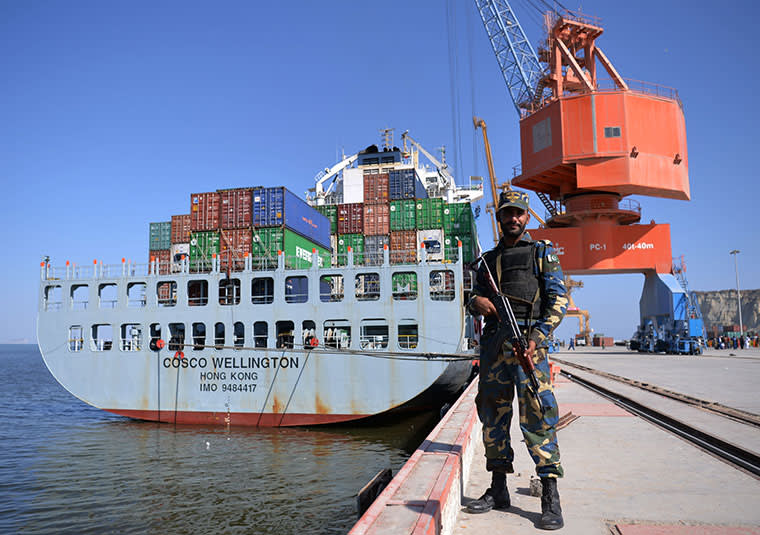
Investments into a vast network of harbours across the globe have made Chinese port operators the world leaders. Its shipping companies carry more cargo than those of any other nation — five of the top 10 container ports in the world are in mainland China with another in Hong Kong. Its coastguard has the globe’s largest maritime law enforcement fleet, its navy is the world’s fastest growing among major powers and its fishing armada numbers some 200,000 seagoing vessels.
The emergence of China as a maritime superpower is set to challenge a US command of the seas that has underwritten a crucial element of Pax Americana, the relative period of peace enjoyed in the west since the second world war. As US President-elect Donald Trump prepares to take power, strategic tensions between China and the US are already evident in the South China Sea, where Beijing has pledged to enforce its claim to disputed islands and atolls. Rex Tillerson, the Trump nominee for US secretary of state, said on Wednesday that Washington should block Beijing’s access to the islands. Relations were also dented over Mr Trump’s warm overtures toward Taiwan, which China regards as a breakaway province.
China understands maritime influence in the same way as Alfred Thayer Mahan, the 19th century American strategist. “Control of the sea,” Mr Mahan wrote, “by maritime commerce and naval supremacy, means predominant influence in the world; because, however great the wealth of the land, nothing facilitates the necessary exchanges as does the sea.”
Drummed into military service
The Gwadar template, where Beijing used its commercial know-how and financial muscle to secure ownership over a strategic trading base, only to enlist it later into military service, has been replicated in other key locations.
In Sri Lanka, Greece and Djibouti in the Horn of Africa, Chinese investment in civilian ports has been followed by deployments or visits of People’s Liberation Army Navy vessels and in some cases announcements of longer term military contingencies.
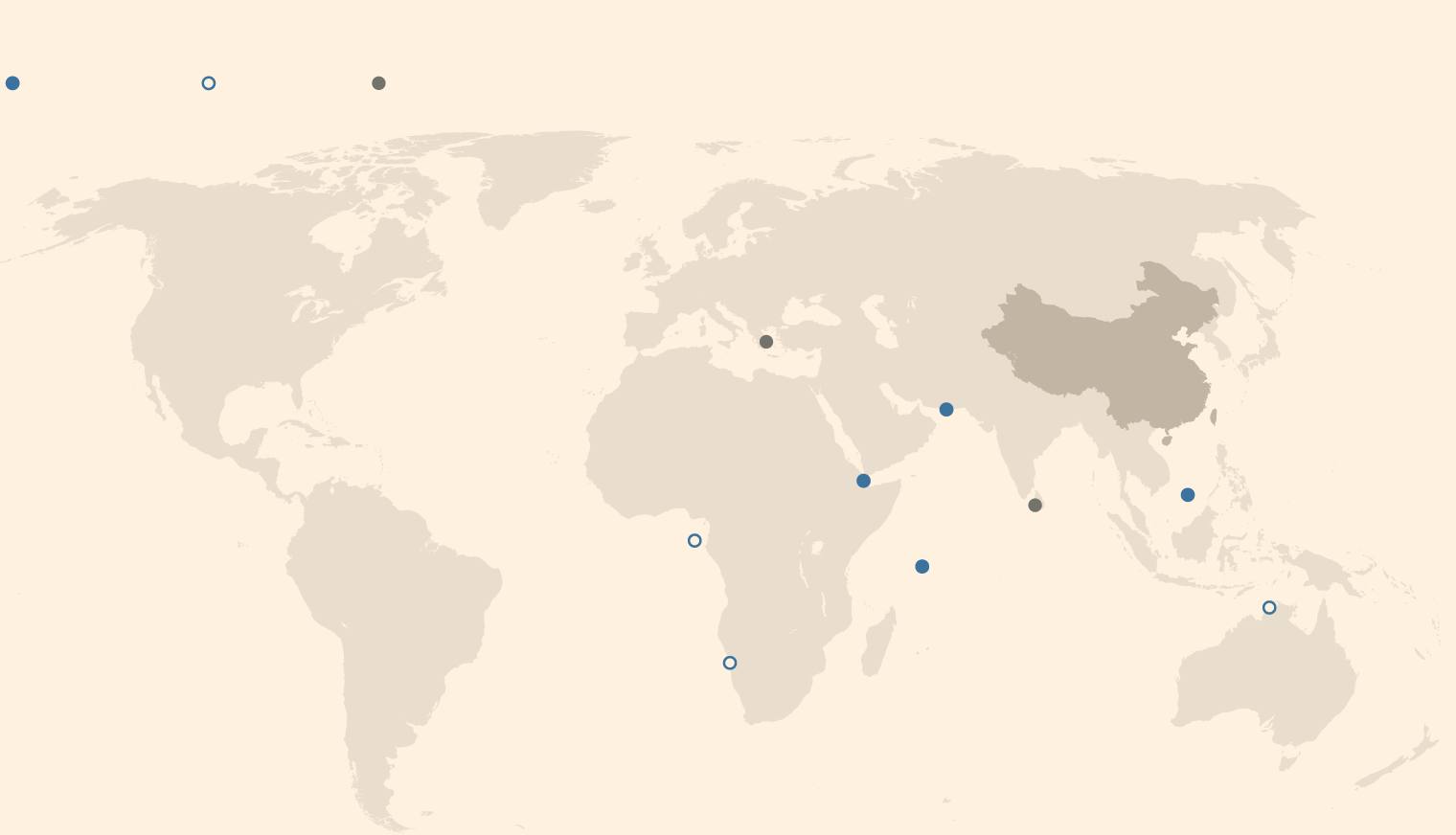
China’s ‘dual use’ commercial and naval ports
Confirmed
Possible
High-profile naval visits to ports owned by China
Piraeus
(Greece)
CHINA
Gwadar (Pakistan)
South China
Sea atolls
Djibouti
Colombo
(Sri Lanka)
São Tomé
and Príncipe
Seychelles*
Darwin**
(Australia)
Walvis Bay
(Namibia)
*China has not invested in a port, but its navy uses Seychelles' facilities in anti-piracy operations in the Indian Ocean
**The US has expressed concern over the possible use of Chinese-owned Darwin port for military purposes
Source: FT research
“There is an inherent duality in the facilities that China is establishing in foreign ports, which are ostensibly commercial but quickly upgradeable to carry out essential military missions,” says Abhijit Singh, senior fellow at the Observer Research Foundation in New Delhi. “They are great for the soft projection of hard power.”
Data compiled or commissioned by the Financial Times from third-party sources show the extent of China’s dominance in most maritime domains.
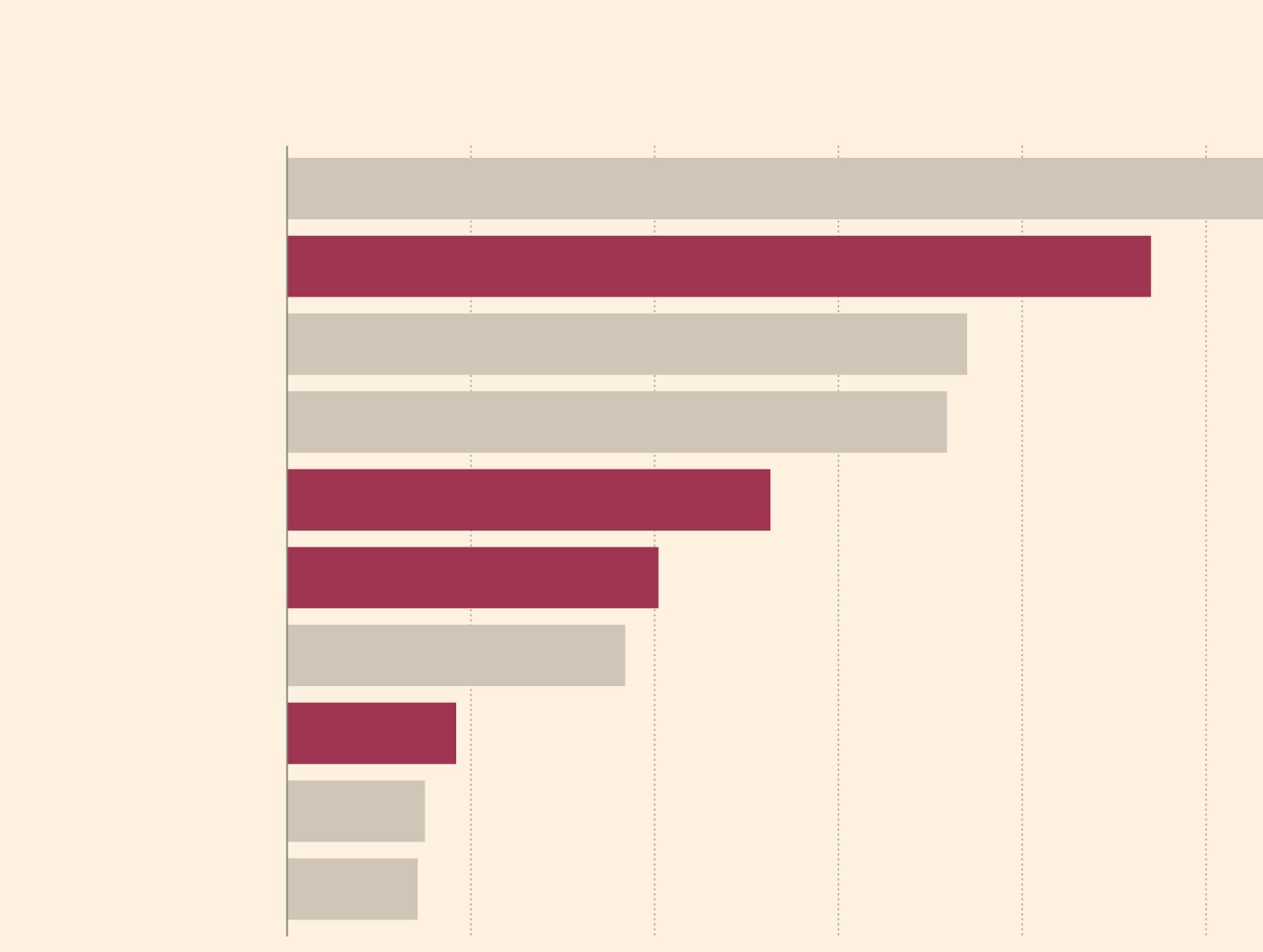
China’s port operators take up strong positions
2015, twenty-foot equivalent units (million)
0
10
20
30
40
50
PSA International
(Singapore)
Hutchison
Ports Holdings
DP World
(UAE)
APM Terminals
(Netherlands)
China Merchants
Port Holdings
Cosco Group
Terminal Investment
(Lux. incorporated)
China Shipping
Terminal Development
Evergreen
(Taiwan)
Eurogate
(Germany)
Source: Drewry
Beijing’s shipping lines deliver more containers than those from any other country, according to data from Drewry, the shipping consultancy. The five big Chinese carriers together controlled 18 per cent of all container shipping handled by the world’s top 20 companies in 2015, higher than the next country, Denmark, the home nation of Maersk Line, the world’s biggest container shipping group.
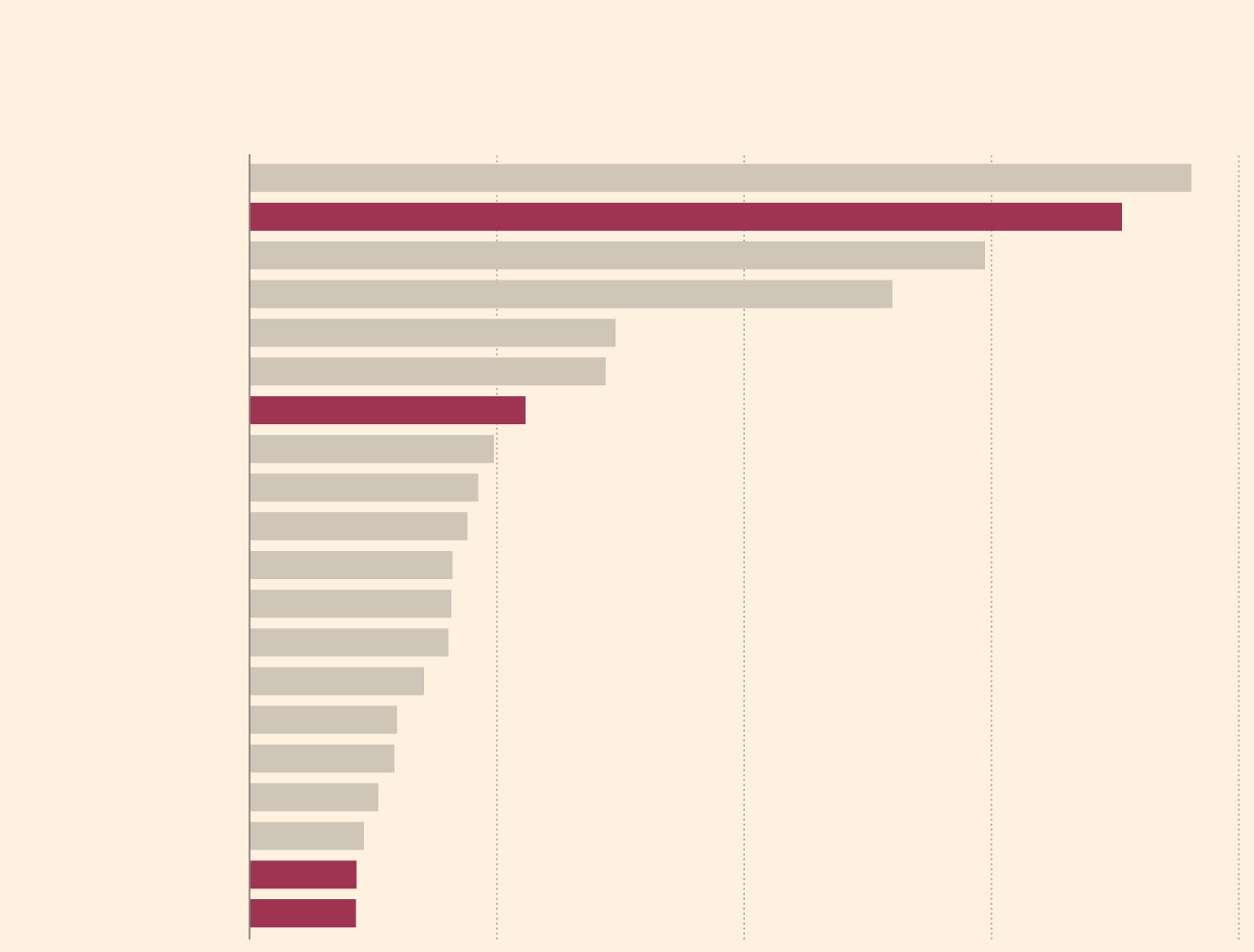
China’s container shipping lines eclipse those of other countries
2015, twenty-foot equivalent units (million)
0
5
10
15
20
Maersk*
Cosco/CSCL**
MSC
CMA CGM Group
Hapag-Lloyd
Evergreen (2014)
OOCL
APL
Hanjin Shipping
NYK
Hamburg Süd Group*
MOL
Yang Ming
Wan Hai
K Line
HMM
UASC
Zim
SITC
Sinotrans
** Cosco and CSCL announced their merger in 2015
Source: Drewry
In terms of container ports, China already rules the waves. Nearly two-thirds of the world’s top 50 had some degree of Chinese investment by 2015, up from about one-fifth in 2010, according to FT research.

Chinese investment in the world’s largest ports has boomed
Top 50 container ports ranked by container traffic volume (twenty-foot equivalent unit)
Chinese owned
Chinese invested
No Chinese investment
Greater China (Taiwan) port
Chinese investment announced
Rank
2000
2010
2015
1
Singapore
Hong Kong
Busan
Yangshan (Shanghai)
A 2016 Chinese agreeement
to invest in three new mega
berths in Singapore will
ensure the port maintains
its top global ranking
Yantian (Shenzhen)
Beilun (Ningbo)
Port Klang
Shanghai
Rotterdam
10
Chiwan
Kaohsiung
Jebel Ali
Tanjung Pelapas
Xiamen
Antwerp
Qianwan (Qingdao)
Colombo International
Container Terminal more than
doubled its container throughput
in 2015 to 1.6m TEUs
following a $500m investment
by China Merchants
Holdings International
Hamburg
Qingdao
Ningbo Anch
20
Xingang (Tianjin)
Colombo
Bremerhaven
Valencia
Balboa
Le Havre
Nansha (Guangzhou)
Gwangyang
Jeddah
Algeciras
30
Felixstowe
Laem Chabang
New York
Tokyo
Yokohama
Piraeus
Tangier
Nagoya
Dalian
Kobe
Cosco Pacific, China Merchants
Holdings International and
China Investment Corporation
acquire Kumport, Turkey’s
third largest container
terminal, in 2015
40
Port Klang Anch
Barcelona
Marsaxlokk
Genoa
Coco Solo
Cartagena
All of the world’s top
20 shipping companies
have built up their routes
through Xiamen since 2000
Ho Chi Minh
Ambarli
Jakarta
Keelung
50
Osaka
Sources: Lloyd's List Intelligence (port rankings); FT research (investments)
And those ports handled 67 per cent of global container volumes, up from 42 per cent in 2010, according to Lloyd’s List Intelligence, the maritime and trade data specialists. If only containers directly handled by Chinese port operators are measured, the level of dominance is reduced but still emphatic. Of the top 10 port operators worldwide, Chinese companies handled 39 per cent of all volumes, almost double the second largest nation group, according to data from Drewry.
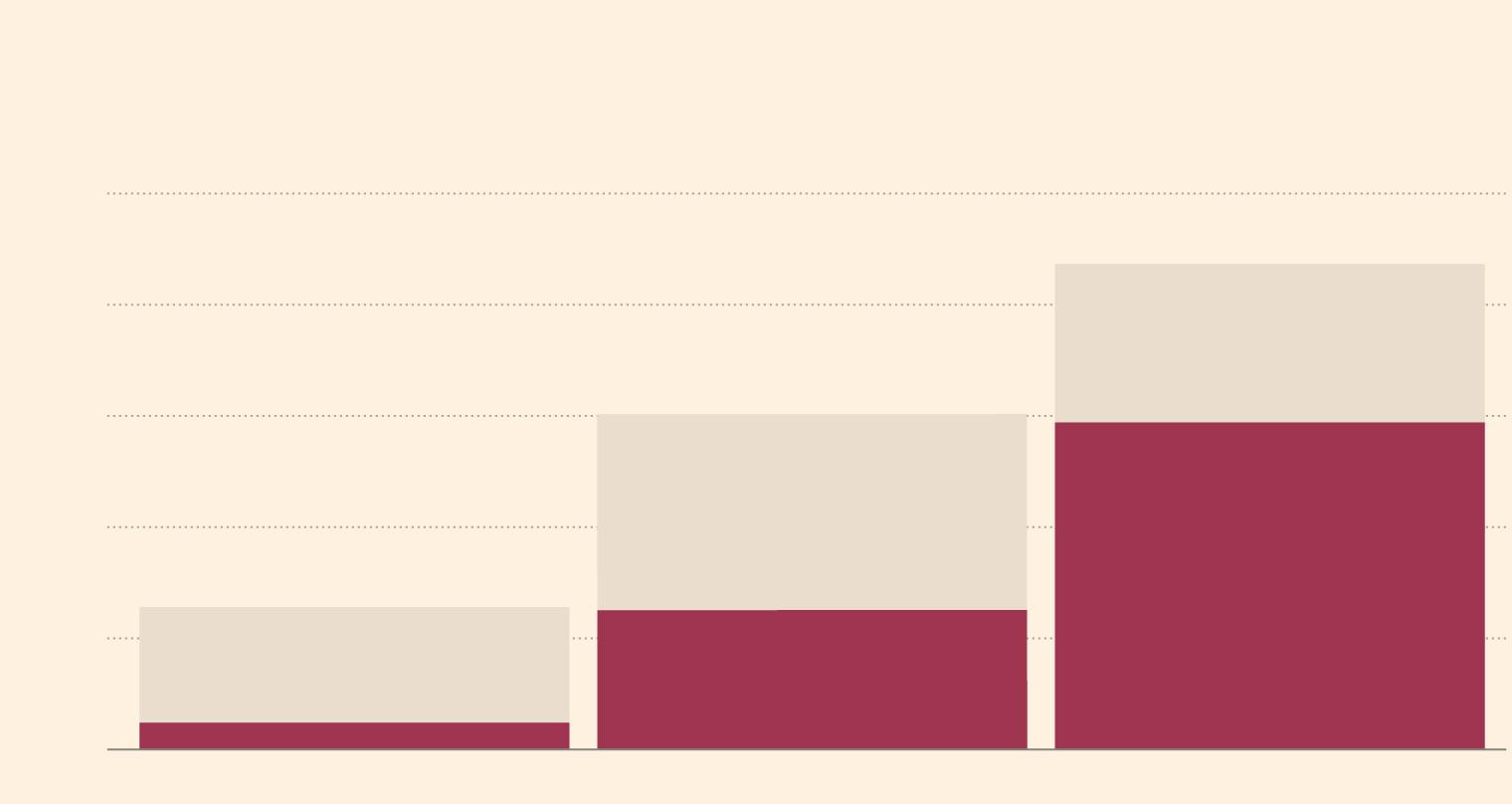
Two-thirds of container traffic passes through Chinese owned or invested ports
Twenty-foot equivalent units (million) and percentage of total for world's top 50 container ports
1,000
800
67%
600
400
42%
200
19%
0
2000
2010
2015
Sources: Lloyd's List Intelligence; FT research
It is not only the world’s biggest ports that have attracted Chinese investments. Dozens of smaller harbours — including some in key strategic locations such as Djibouti, Hambantota in Sri Lanka, Darwin in Australia, Maday Island in Myanmar and proposed ports on the Atlantic Ocean islands of São Tomé and Príncipe and in Walvis Bay in Namibia — have also drawn investments or promises of Chinese port construction.
The total size of these investments is difficult to calculate because of sketchy disclosure. But since 2010, Chinese and Hong Kong companies have completed or announced deals involving at least 40 port projects worth a total of about $45.6bn, according to a study by Sam Beatson and Jim Coke at the Lau China Institute, King’s College London, in co-operation with the Financial Times. A dozen other deals — from Carey Island, Malaysia, to Chongjin in North Korea — have been reported without any financial details.
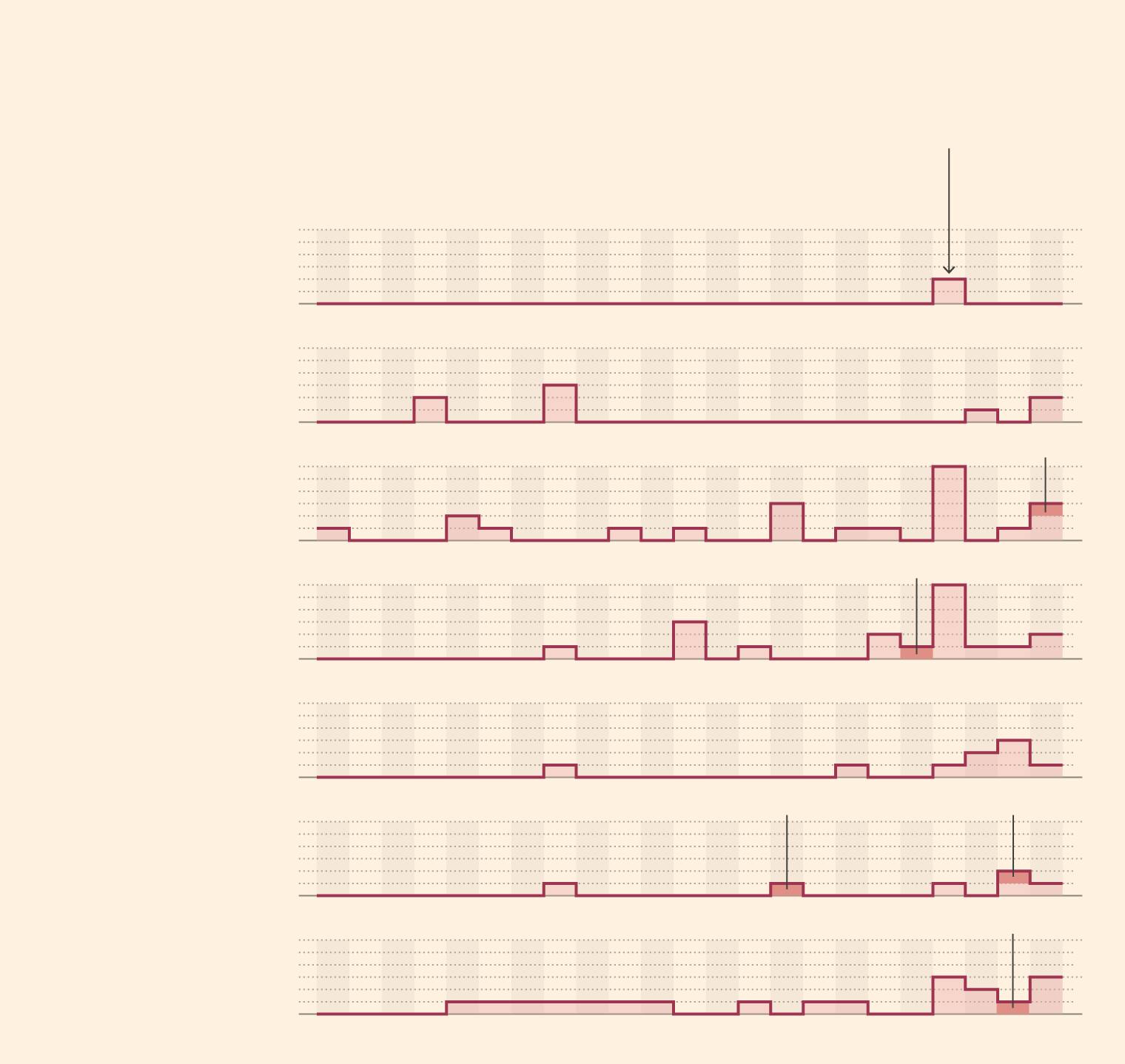
Chinese investment in foreign ports is speeding up
Number by region
Terminal Link deal in 2013 gave China Merchants
Holdings International ownership of terminals in
more than 10 ports, including Houston and Miami
1994
96
98
2000
02
04
06
08
10
12
14
16
6
North America
0
Latin America and Caribbean
Piraeus (Greece)
6
Europe and Central Asia
0
Djibouti
Middle East and north Africa
6
Sub-Saharan Africa
0
Hambantota (Sri Lanka)
Gwadar (Pakistan)
South Asia
Darwin (Australia)
6
East Asia and Pacific
0
1994
96
98
2000
02
04
06
08
10
12
14
16
Sources: King’s College, London; FT research
Rounding out a picture of China’s merchant fleet dominance is the country’s fishing fleet, which is by far the largest in the world, according to a recent paper by Michael McDevitt, a former rear admiral in the US navy and now a senior fellow at CNA Strategic Studies, a US think-tank.
“In the Chinese context, maritime power encompasses more than naval power,” wrote Mr McDevitt. “The maritime power equation includes a large and effective coastguard, a world-class merchant marine and fishing fleet, a globally recognised shipbuilding capacity and an ability to harvest or extract economically important maritime resources, especially fish.”
Journey from land to sea
For thousands of years, Chinese emperors focused on defending the middle kingdom against land-based invasions, usually from the north and west. But in 2015 an official white paper on military strategy decreed a big shift that offers a glimpse of the country’s changing maritime objectives.
“The traditional mentality that land outweighs sea must be abandoned, and great importance has to be attached to managing the seas and oceans and protecting maritime rights and interests,” the document said. It added that the Chinese navy should protect “the security of sea lanes of communication and overseas interests”.
Analysts say that China’s naval strategy is aimed primarily at denying US aircraft carrier battle groups access to a string of archipelagos from Russia’s peninsula of Kamchatka to the Malay Peninsula in the south, a natural maritime barrier called the “first island chain” within which China identifies its strategic sphere of influence.
Another focus is the string of artificial islands that Beijing has dredged out of coral reefs and rocks to help reinforce China’s claim to most of the South China Sea, putting it on a collision course with neighbours from Vietnam to the Philippines, as well as the US. The artificial islands have been equipped with landing strips and a US think-tank recently said, after analysis of satellite images, that Beijing appeared to have installed anti-aircraft guns, anti-missile systems and radar facilities on them.
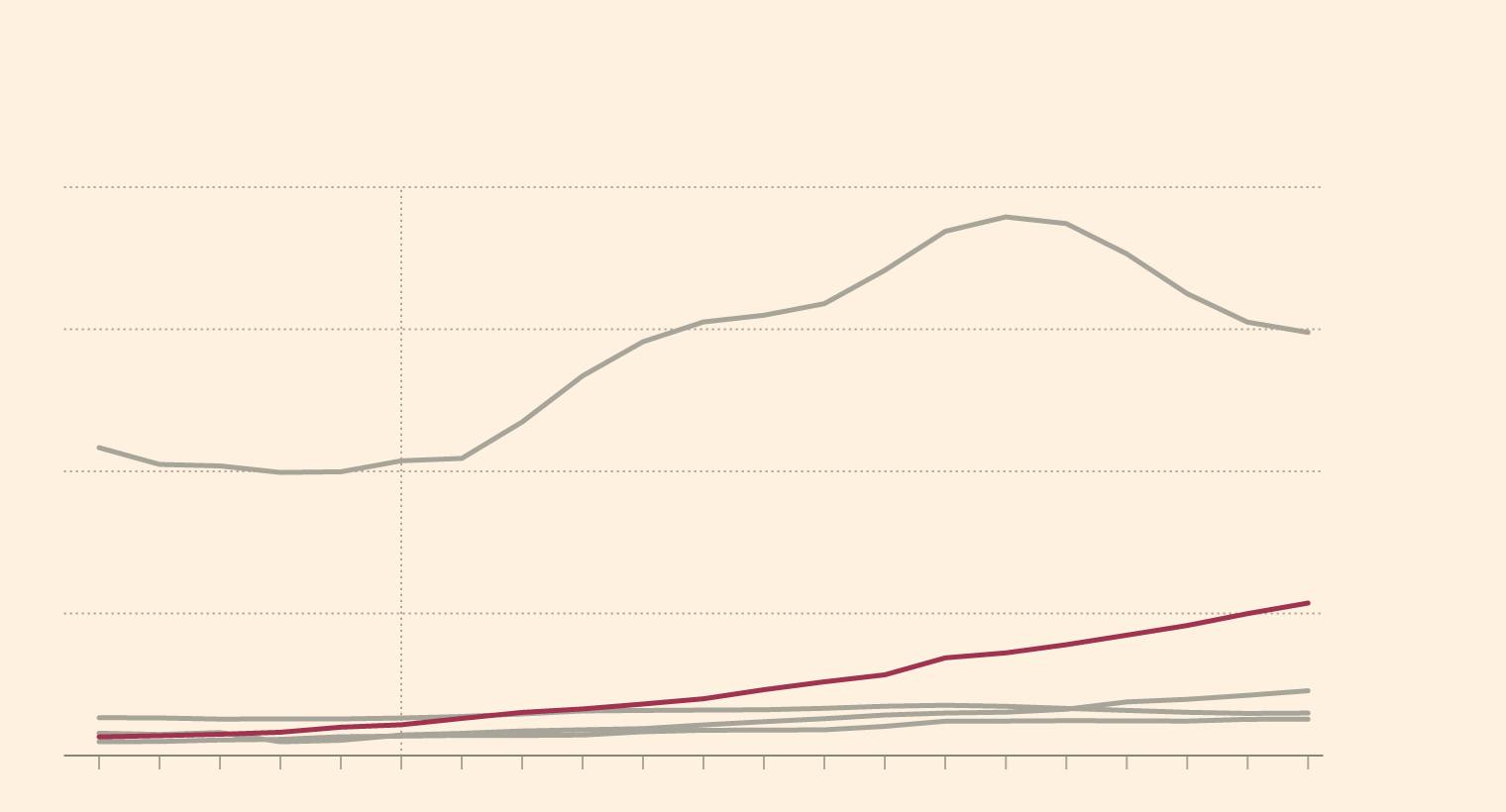
China’s defence spending has increased dramatically since 2000
$bn (constant prices, 2014)
800
600
US: 44%
increase
since 2000
400
China: 396%
200
Russia: 216%
UK: 13%
India: 87%
0
1995
96
97
98
99
2000
01
02
03
04
05
06
07
08
09
10
11
12
13
14
15
Although Beijing plays down such sweeping strategic objectives, the imperative to step up naval security is regularly emphasised in Chinese circles. A 2015 paper in a semi-official journal under the powerful Chinese Academy of Sciences went one step further, calling for China to “make full use of diplomatic and economic methods to establish at strategic maritime locations points for resupply and military bases so as to protect strategic maritime passages”.
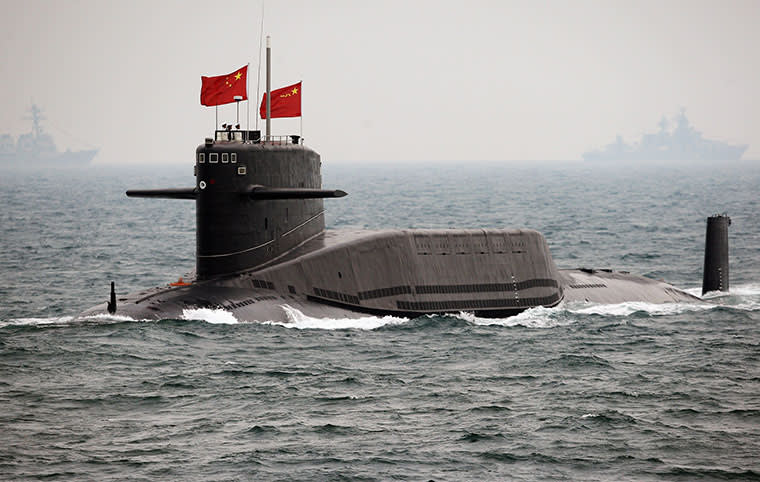
Reality is unfolding in line with the academics’ recommendations. The political justification often used for port investments is “One Belt One Road”, a grand design advocated by Mr Xi to revive the ancient Silk Road trading routes and boost investment and commerce in more than 60 countries in Asia, the Middle East, Africa and Europe.
Gwadar port, for example, is described as the core element in a $54bn China-Pakistan Economic Corridor. At its inception, Chinese involvement in the port was limited to financing and construction, but in 2015 Islamabad handed over ownership to the state-owned China Overseas Port Holding Company on a lease until 2059.
At the time, China claimed the project was purely commercial. Hong Lei, a spokesman for Beijing’s foreign ministry, described the transfer as a “business practice” aimed at boosting “friendly co-operation between the two countries”. The Pakistan side reinforced this line, with Ahsan Iqbal, Pakistan’s minister for planning, development and reform, telling the Financial Times in November last year that there would be “no Chinese military presence” at the port.
Beijing calls in a debt
To the west of Gwadar at Djibouti — on the Horn of Africa’s maritime chokepoint — a similar story has unfolded. China’s initial embrace seemed purely commercial, with the state-owned China Merchants Group taking a stake in the Port of Djibouti’s container terminal in 2012 and paving the way for a $9bn investment including the construction of a liquefied natural gas terminal, a wharf for livestock and a trade logistics park.
But in 2016, Beijing acknowledged that its plans for Djibouti had an additional dimension — the construction of the country’s first overseas naval base, ensuring that China’s military will remain in the region until at least 2026 with a contingent of up to 10,000 personnel. Even now, though, Beijing’s official media calls the base a “logistics centre”.
The financial firepower at China’s disposal can make its entreaties irresistible. In Sri Lanka, President Maithripala Sirisena suspended a $1.4bn “port city” project being built by Chinese companies at Colombo shortly after he took power in 2015. Mr Sirisena was wary over China’s growing influence, as dramatised by two unannounced visits from a PLAN submarine and warship to a Colombo container terminal owned by a Chinese state company in late 2014.
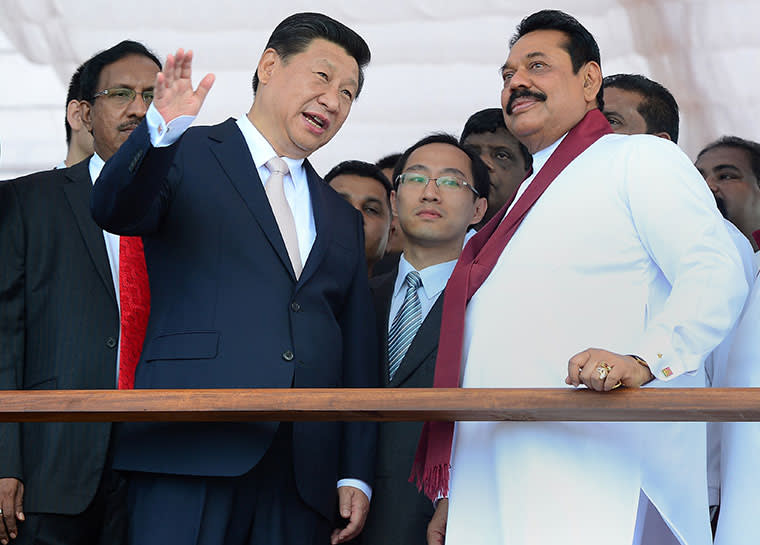
“That was clear testimony as to how an economic project acquires a military dimension for China,” says Brahma Chellaney, professor of Strategic Studies at New Delhi’s Centre for Policy Research. “The progression is quite rapid.”
Following Mr Sirisena’s intervention, Beijing piled diplomatic pressure on Sri Lanka, using as leverage the huge debts that Colombo had built up with Chinese state banks. Last July, China’s foreign minister, Wang Yi, arrived with an uncompromising message, according to a Sri Lankan government official who declined to be identified.
“He was reading the riot act,” says the Sri Lankan official. “Unless the government pulled all their fingers out, and got the project back on stream, China would abandon Sri Lanka altogether.”
Sri Lanka, which has debts of around $8bn with Beijing, duly complied. A month later, the government signed an agreement with the China Harbour Engineering Company, paving the way for the resumption of work on the project after a break of nearly 18 months.
In a related deal a Chinese company agreed to pay $1bn for a controlling stake in the new port at Hambantota on the country’s south coast, giving Beijing another modern harbour on the Indian Ocean. Hambantota had been built by a Chinese construction company with Chinese loans.
Other parts of the Indian Ocean also loom large in Beijing’s ambition to rule the seas. Under a bilateral military agreement, Chinese naval vessels use ports in the Seychelles as hubs from which they conduct anti-piracy patrols. In the Maldives, a visit by Mr Xi in 2014 officially inducted the tiny string of atolls with a population of 350,000 people into the One Belt programme, with promises of infrastructure investments.
In Greece too, China’s acquisition of a controlling stake in Piraeus, one of Europe’s largest ports, signalled a merging of commercial and strategic agendas. When Alexis Tsipras, the country’s prime minister, hosted a Chinese warship and naval top brass in Piraeus in early 2015, Chinese state media quoted him as saying he supported its sale to Chinese interests. Less than a year later, it was sold for $420m.
Chinese officials relished the moment. They recalled how Beijing was embarrassed in 2011 when it needed to evacuate 36,000 Chinese workers from Libya as violence broke out, forcing it at short notice to enlist the help of Greek merchant ships to make the first few rescue missions.
“If that was to happen again,” says a Chinese official who declines to be identified. “We would be much better prepared. We could use the Chinese navy and take the evacuees to our own port at Piraeus.”
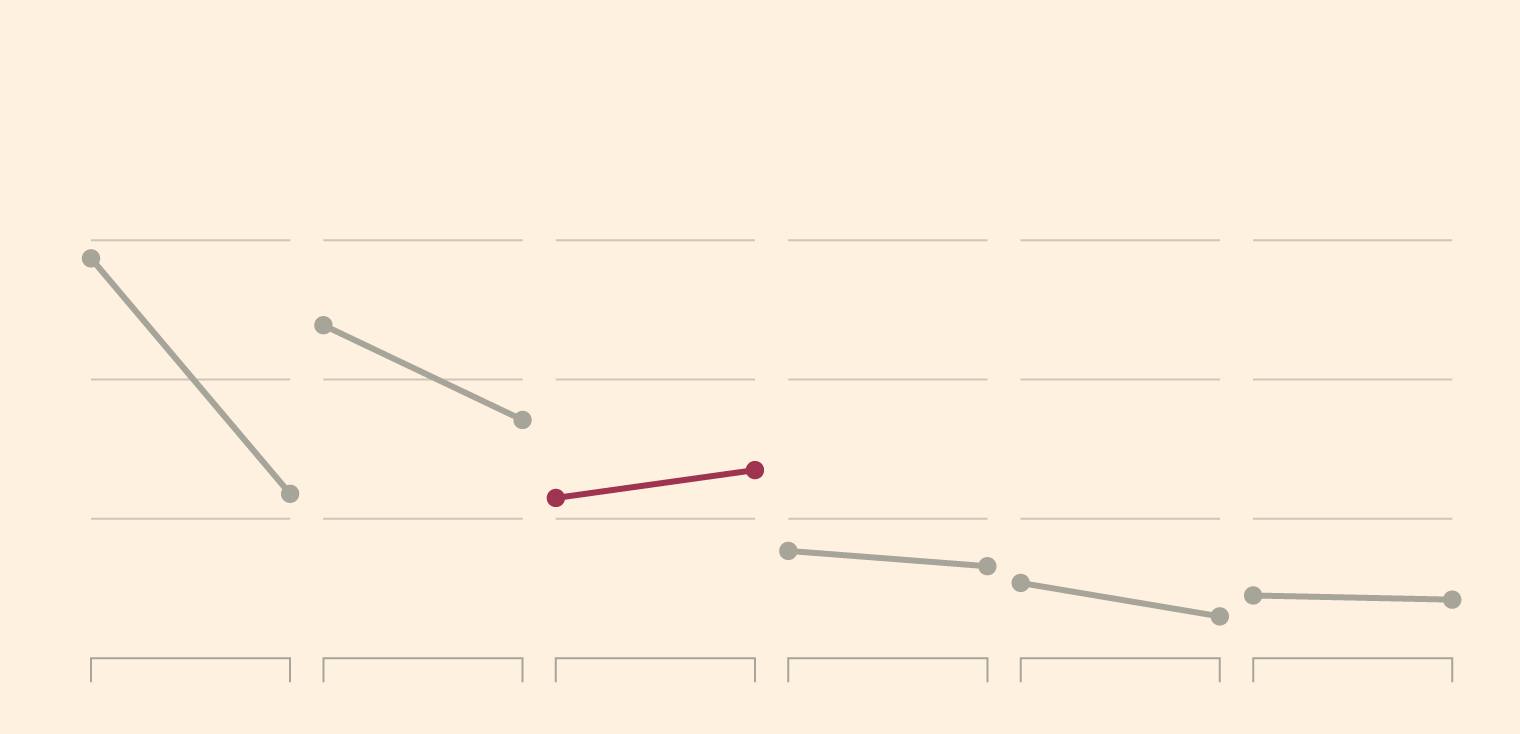
No comments:
Post a Comment
Comments always welcome!